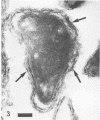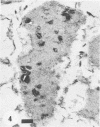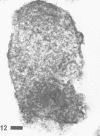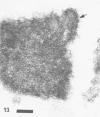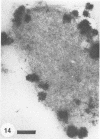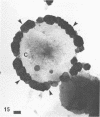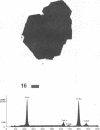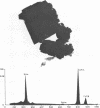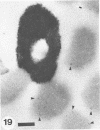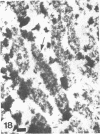Abstract
Cells of Bacillus subtilis, when suspended in a 5mM metal solution, bind metals tenaciously to their cell walls. These metal-loaded cells, when mixed with a synthetic sediment and put under laboratory conditions to simulate low-temperature sediment diagenesis, nucleate the formation of a mixed assemblage of crystalline metal phosphates, metal sulfides, and polymeric, metal-complexed, organic residues. The sequential series of diagenetic events leading to the formation of authigenic mineral phases was followed by transmission electron microscopy and energy-dispersive X-ray analysis. The minerals quartz (SiO2) and calcite (CaCO3) were employed in the synthetic sediment. Crystalline magnetite (Fe2O3) and elemental sulfur were added as redox buffering agents to ensure anoxic conditions. Quartz and magnetite appeared unreactive throughout the experimental conditions. Elemental sulfur interacted with the metal-loaded cells, affected both the eventual chemistry and crystal habit of the metal phosphates, and formed a variety of crystalline metal sulfides. Calcite raised the pH of the fluid phase of the sediment, which influenced phosphate mineralization and inhibited metal sulfide genesis.
Full text
PDF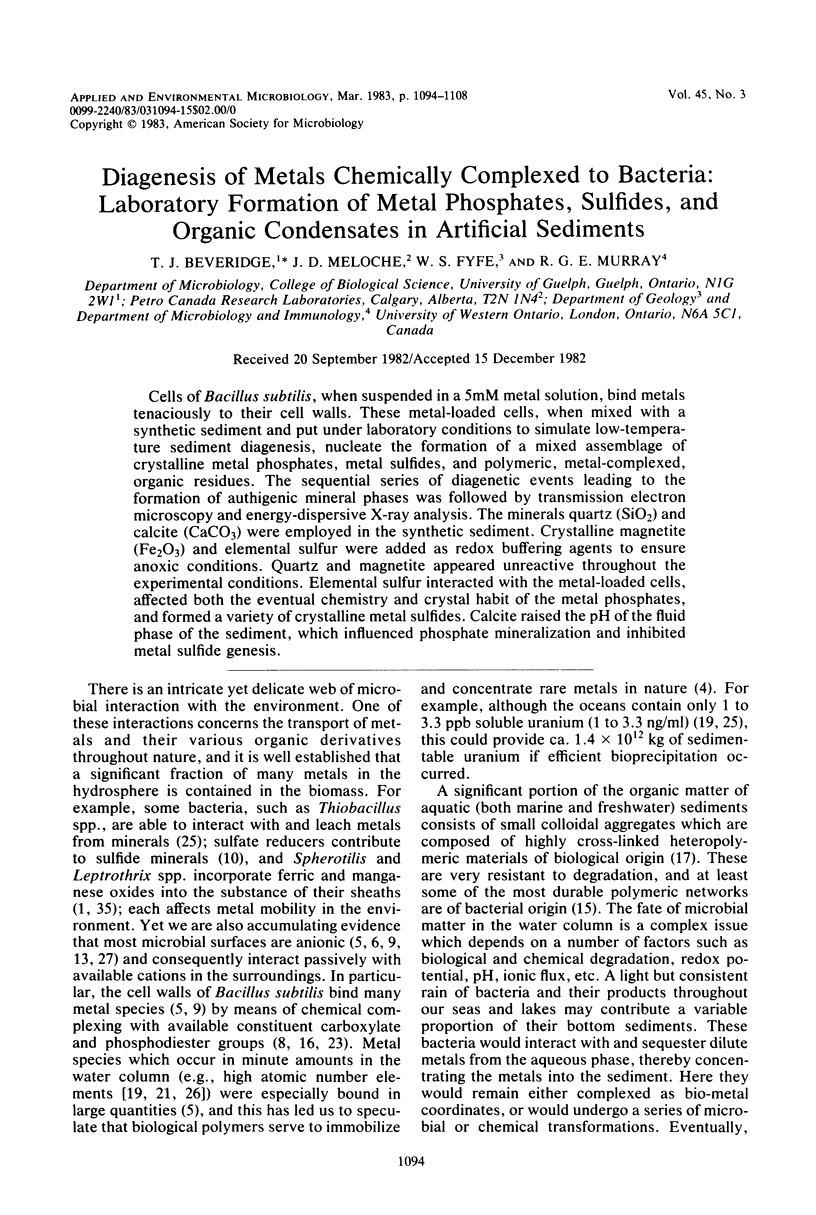
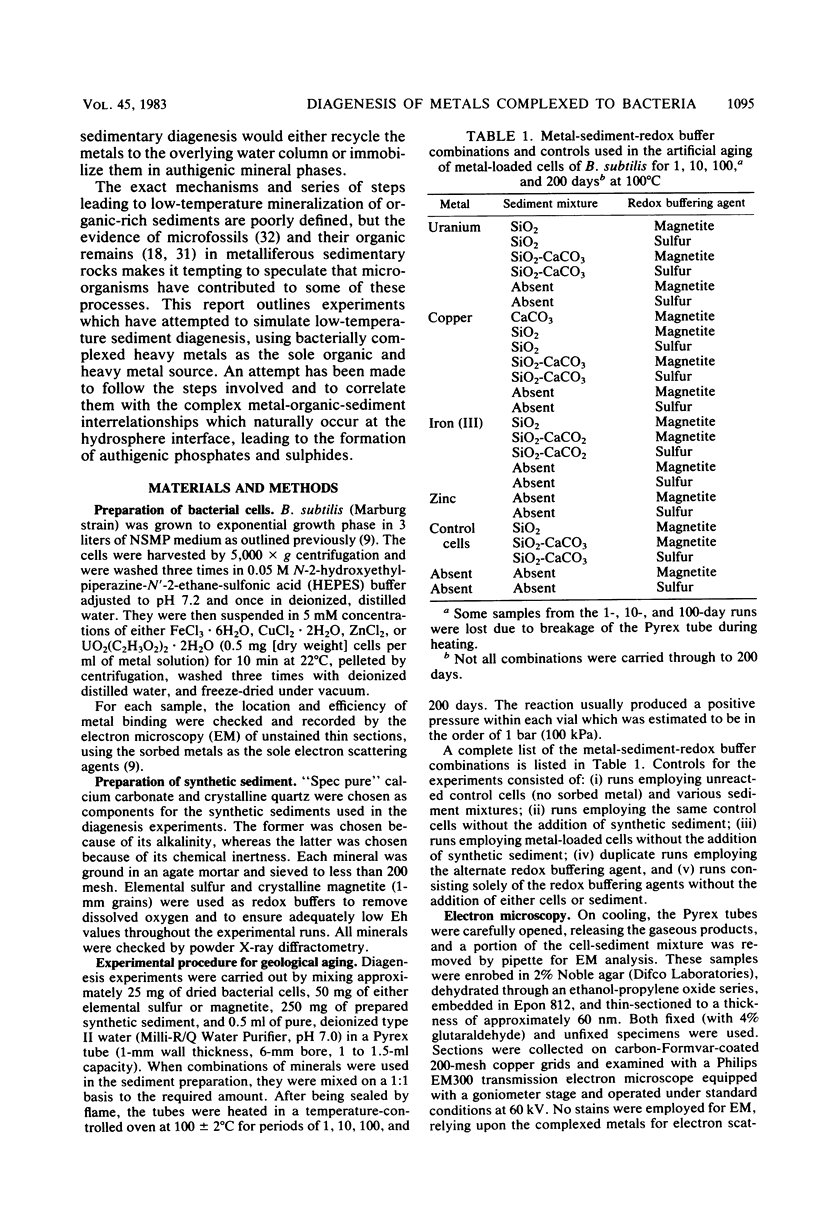
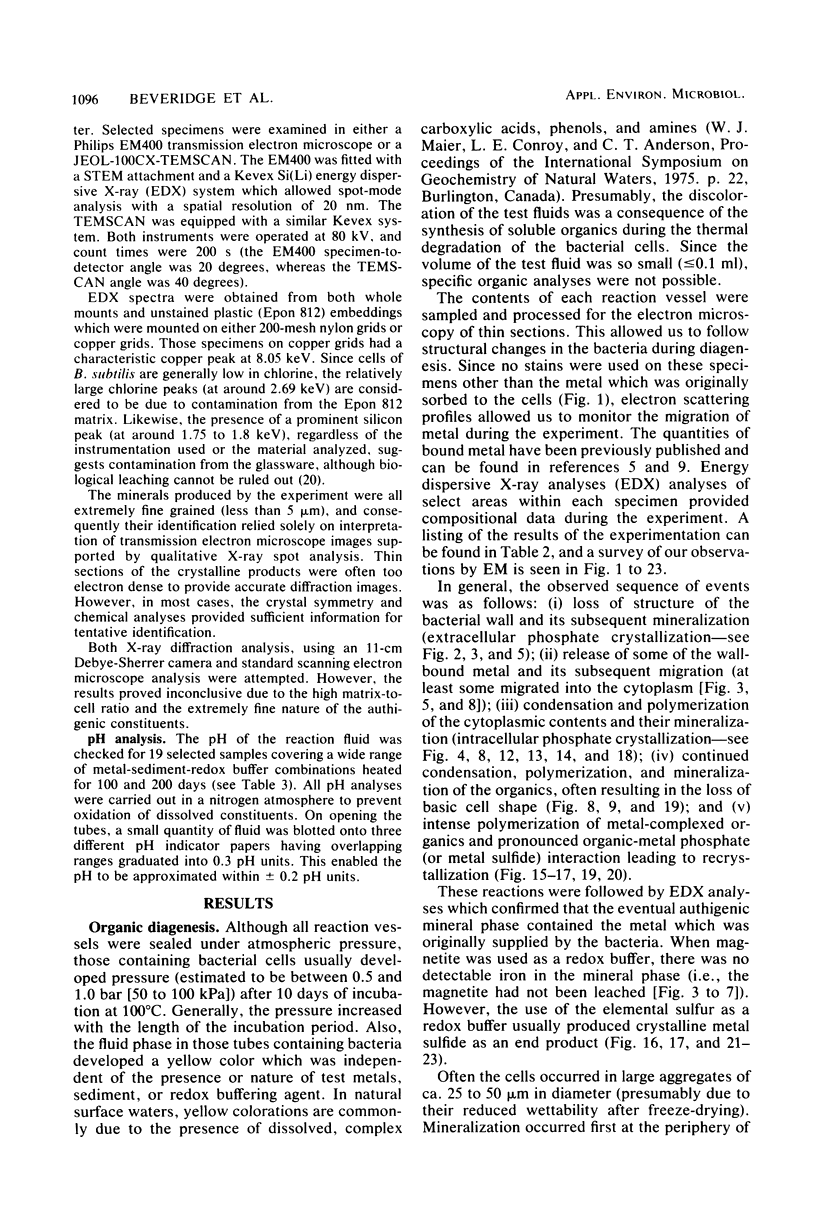
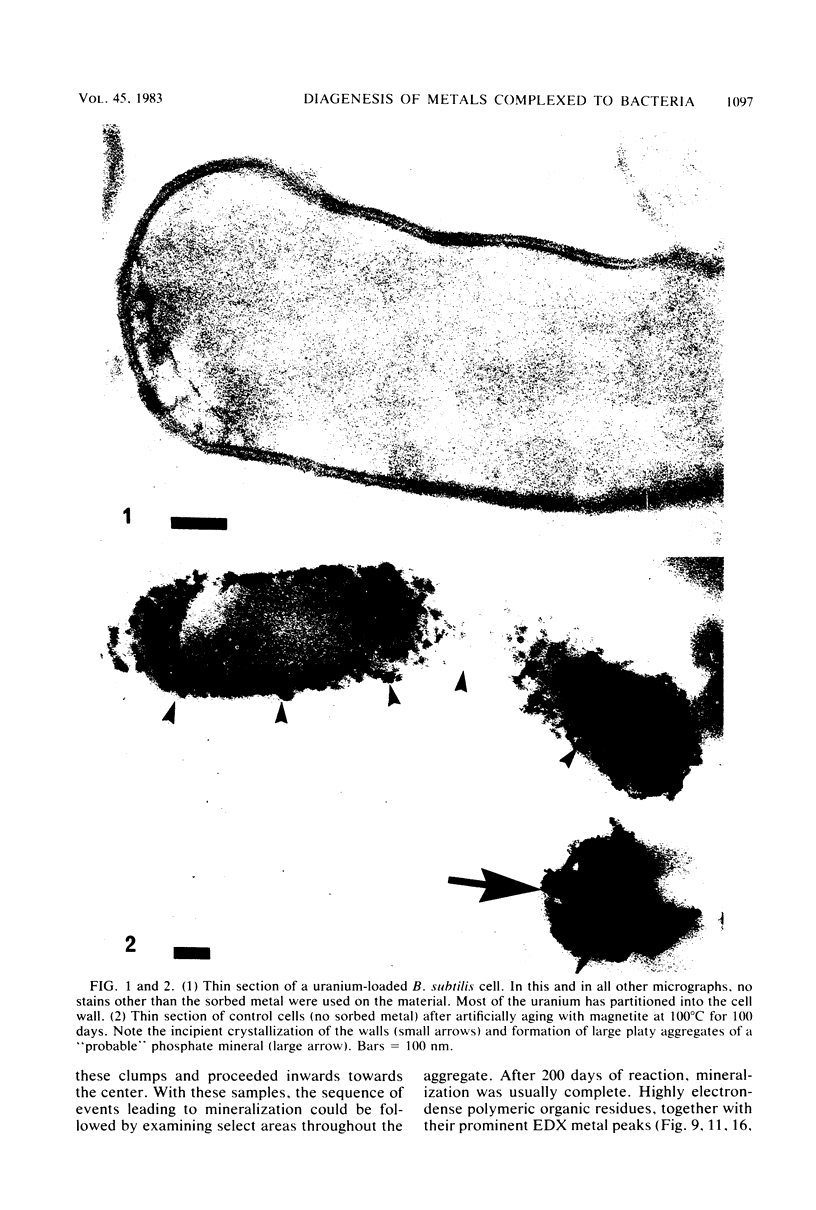
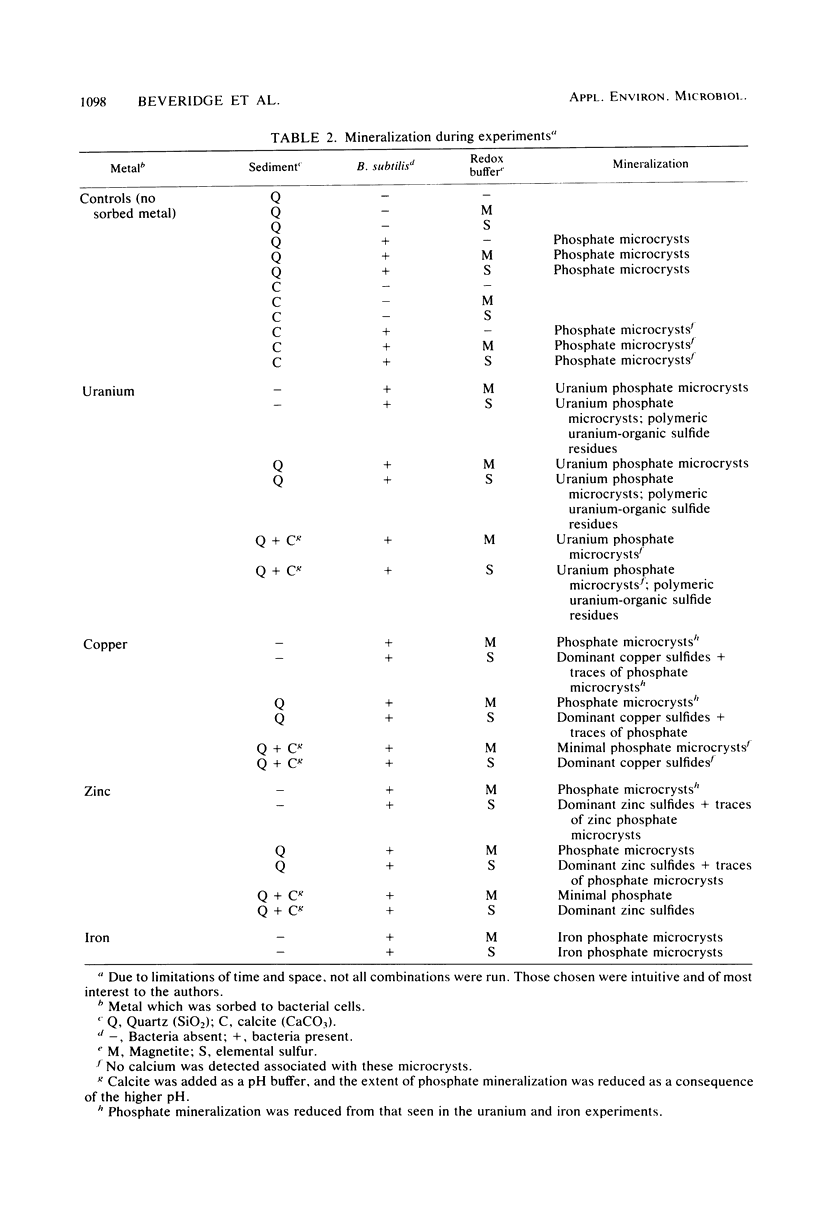
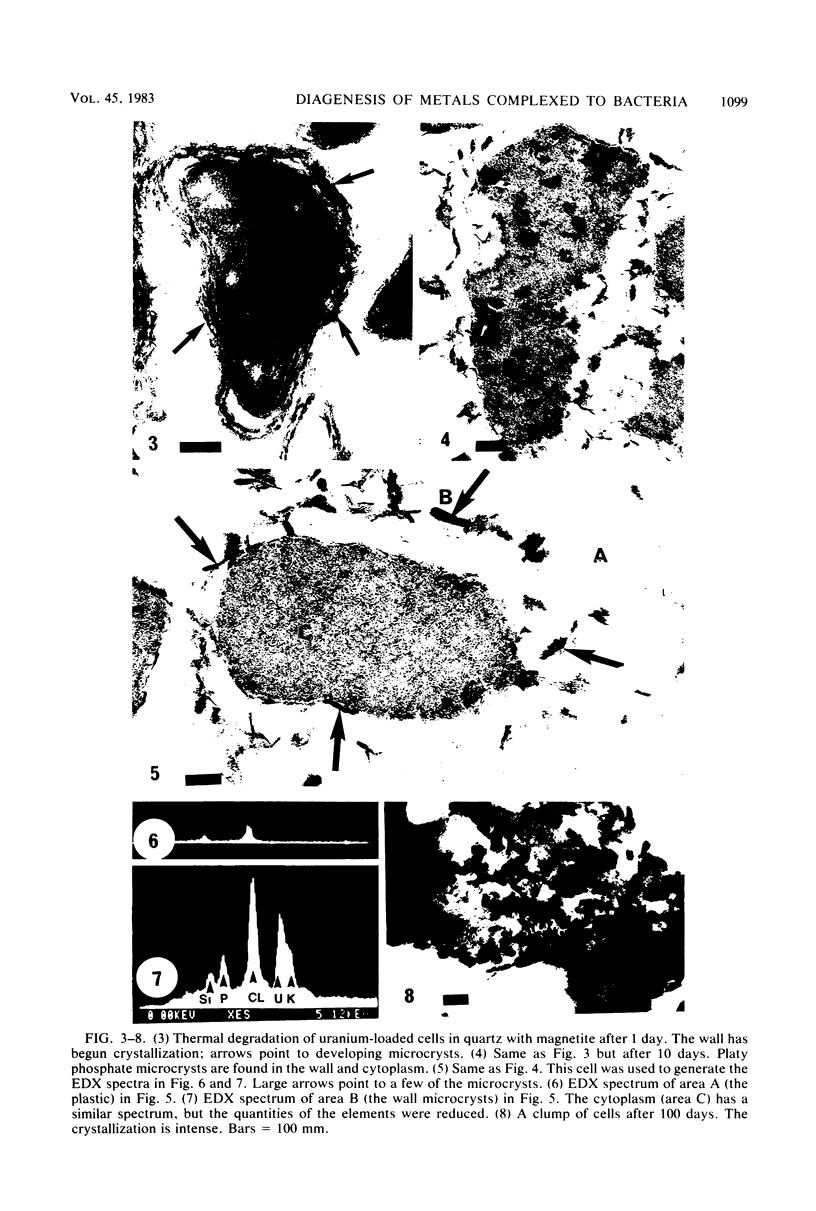
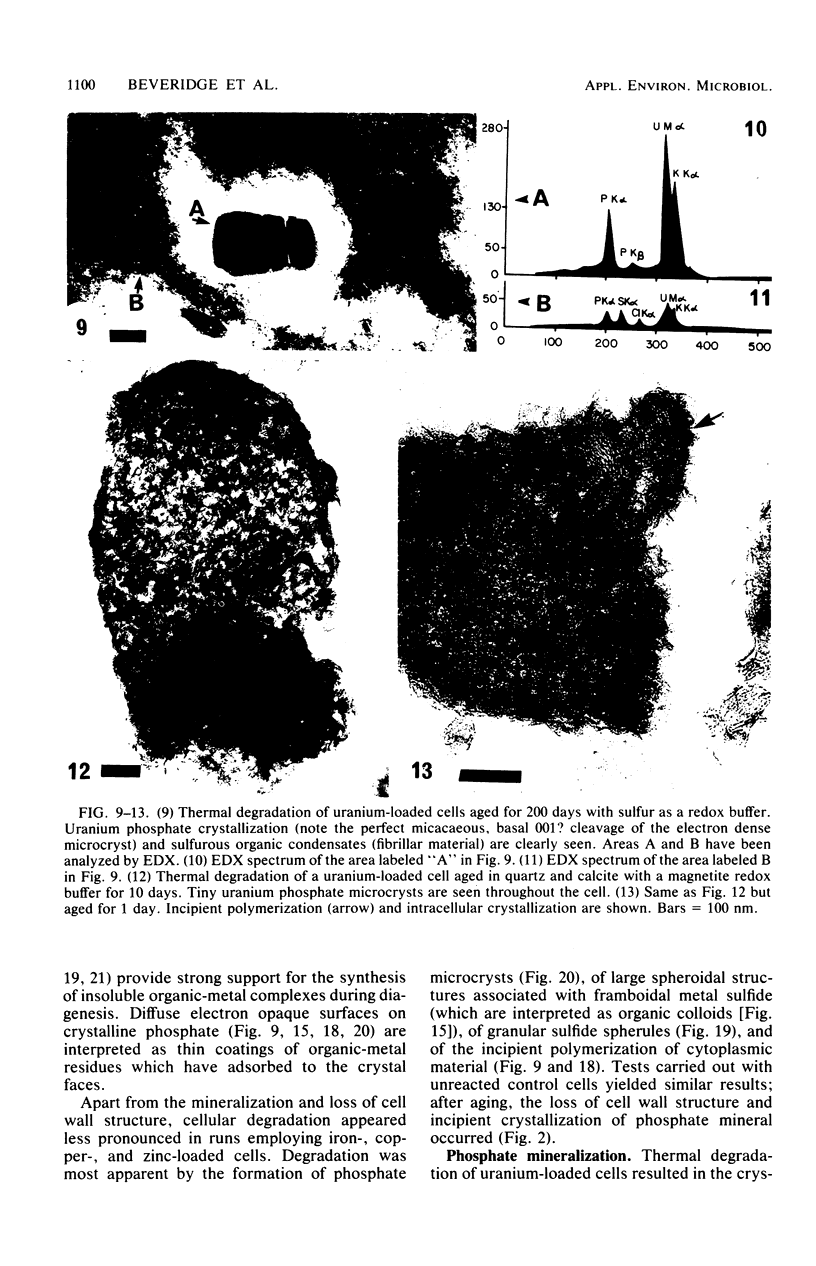
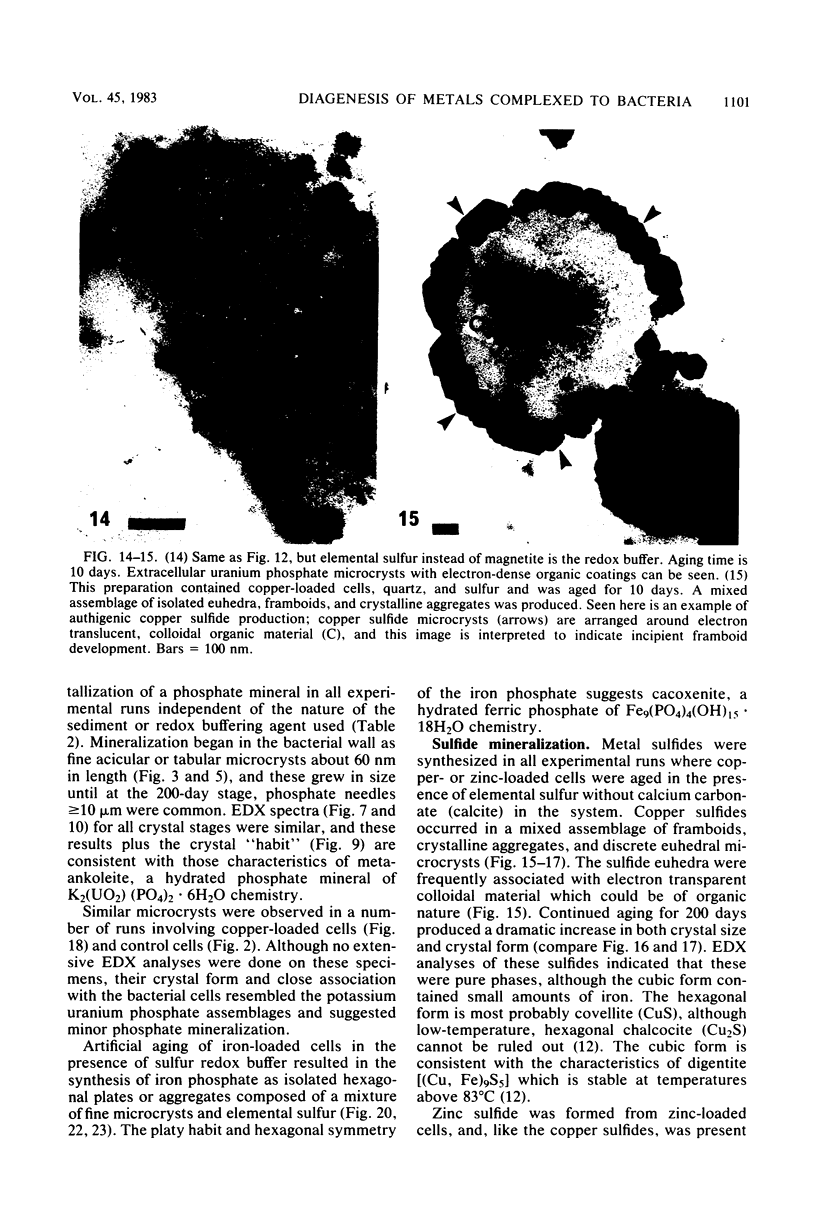
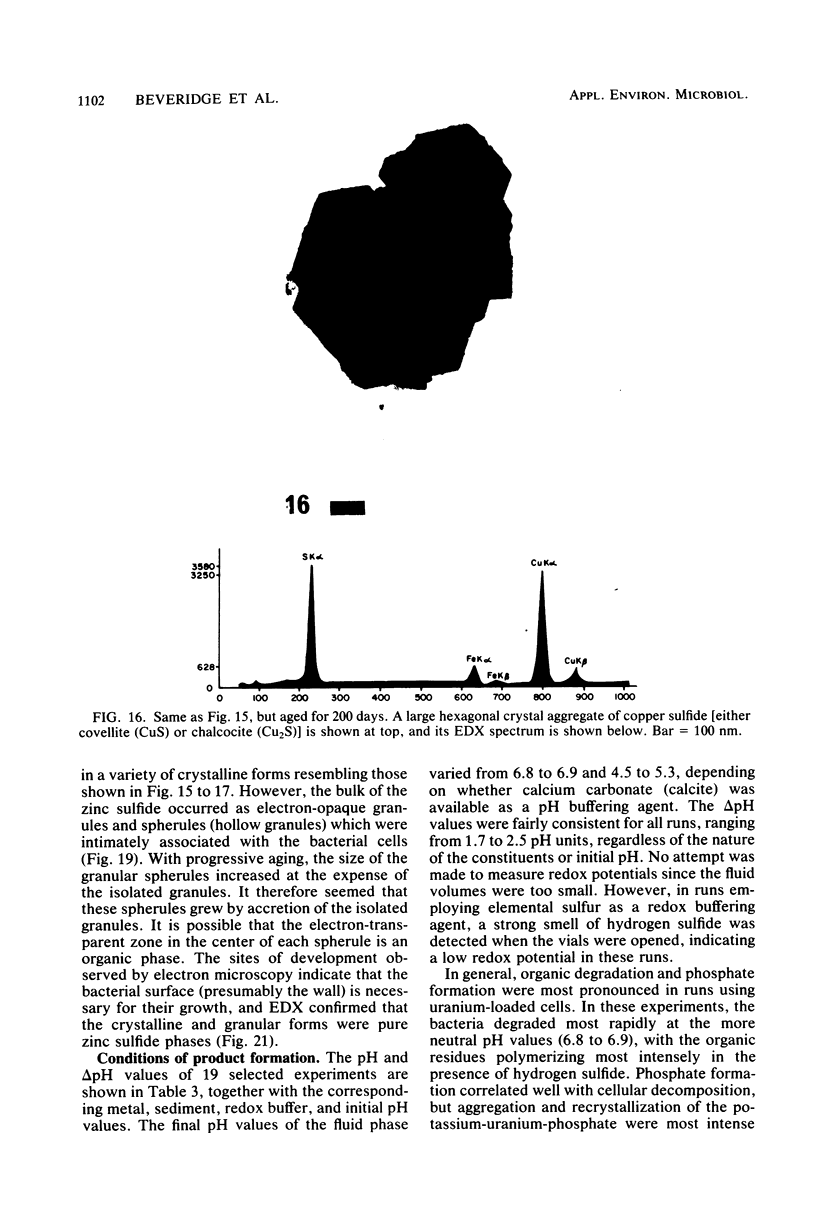
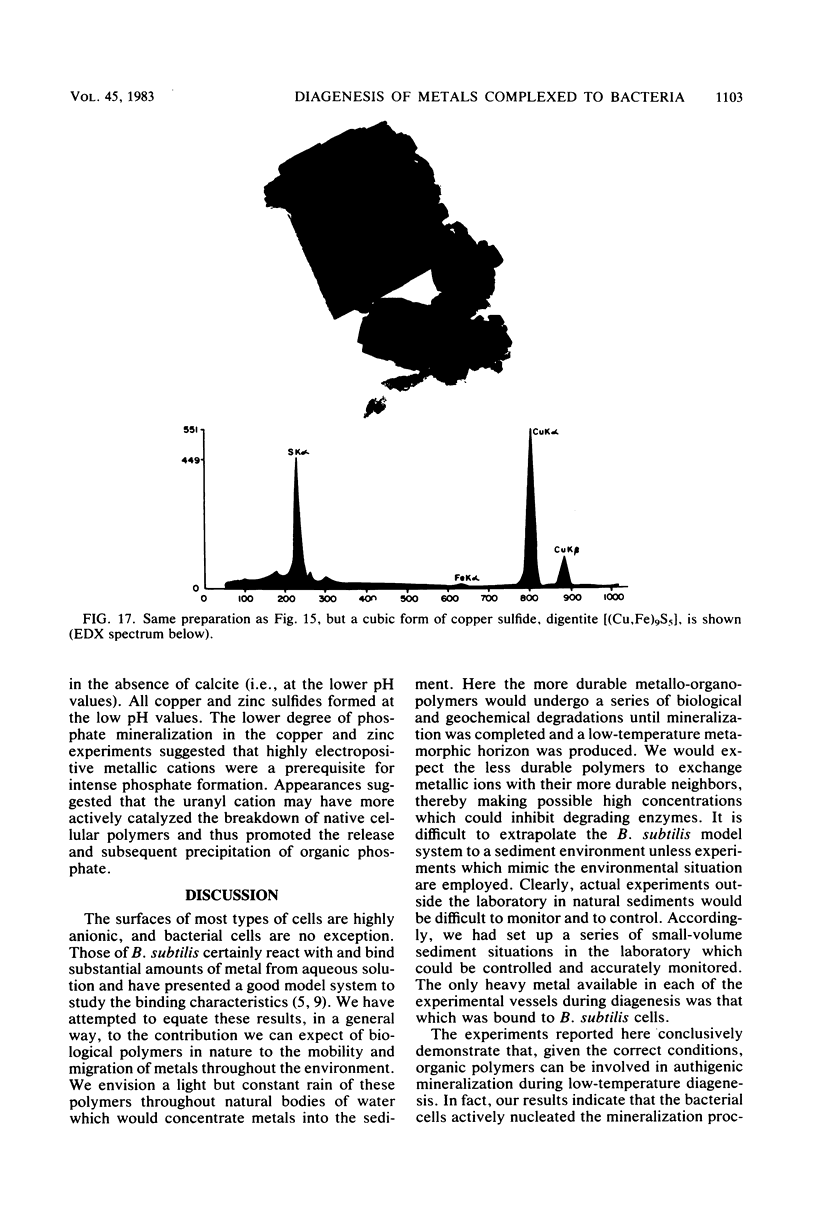
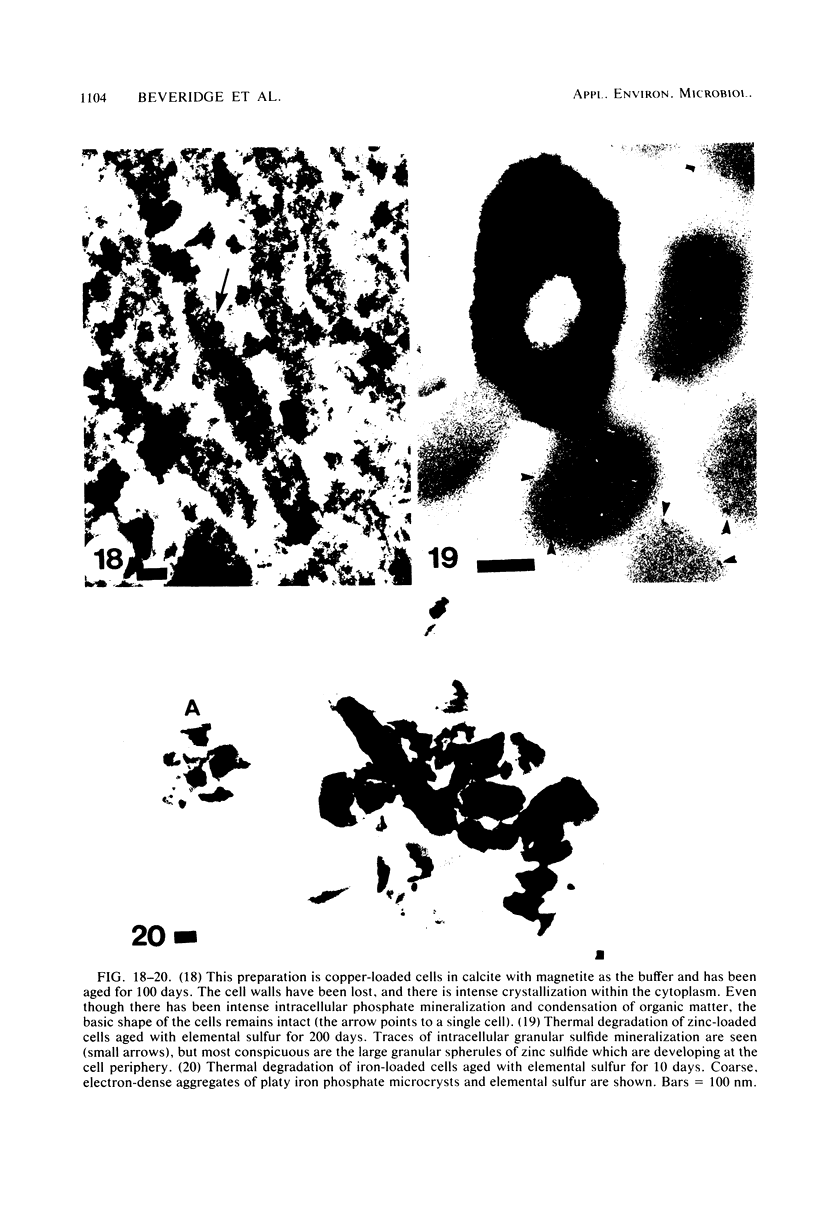
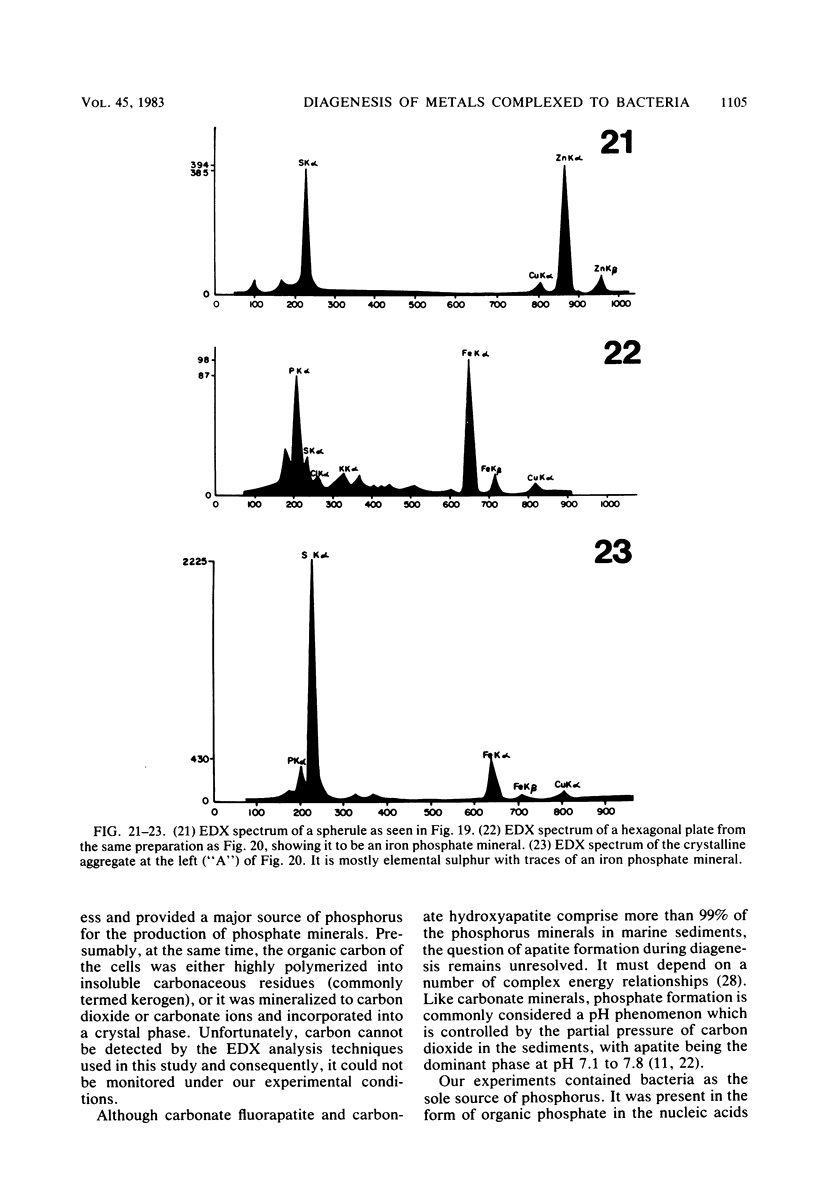
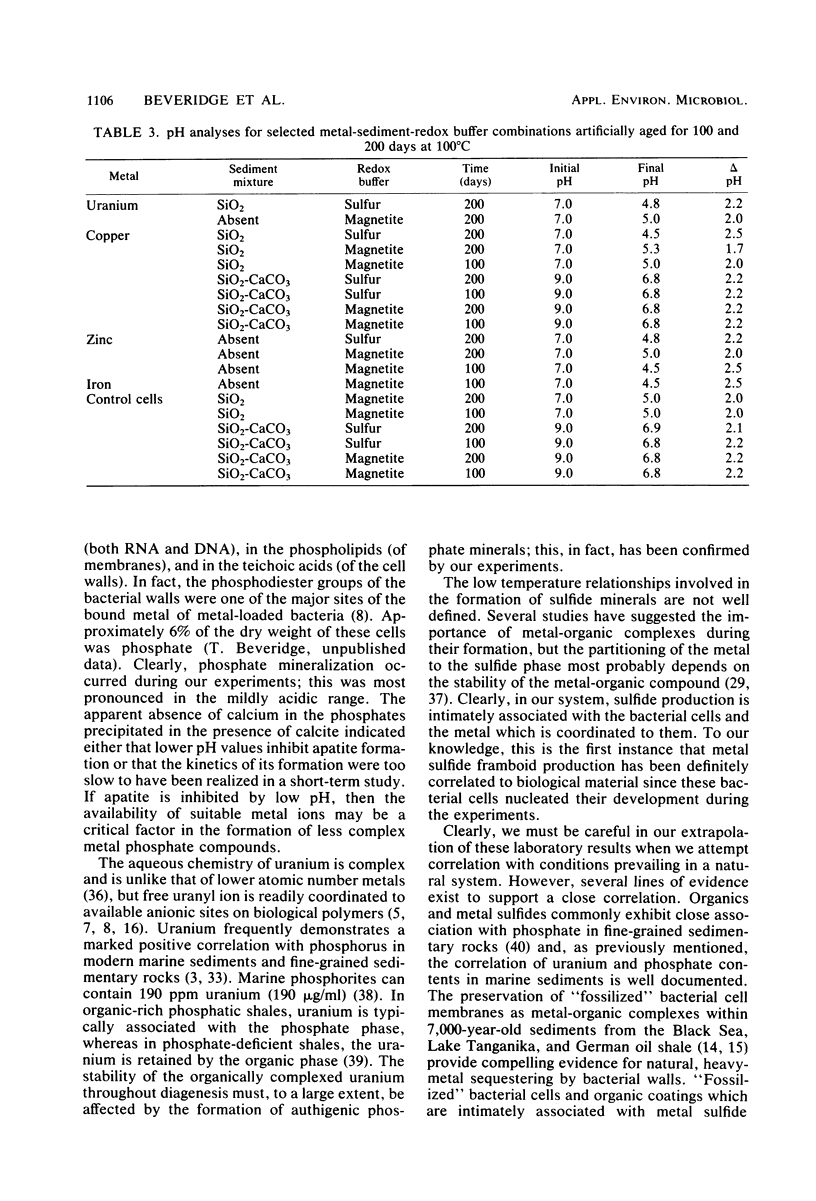
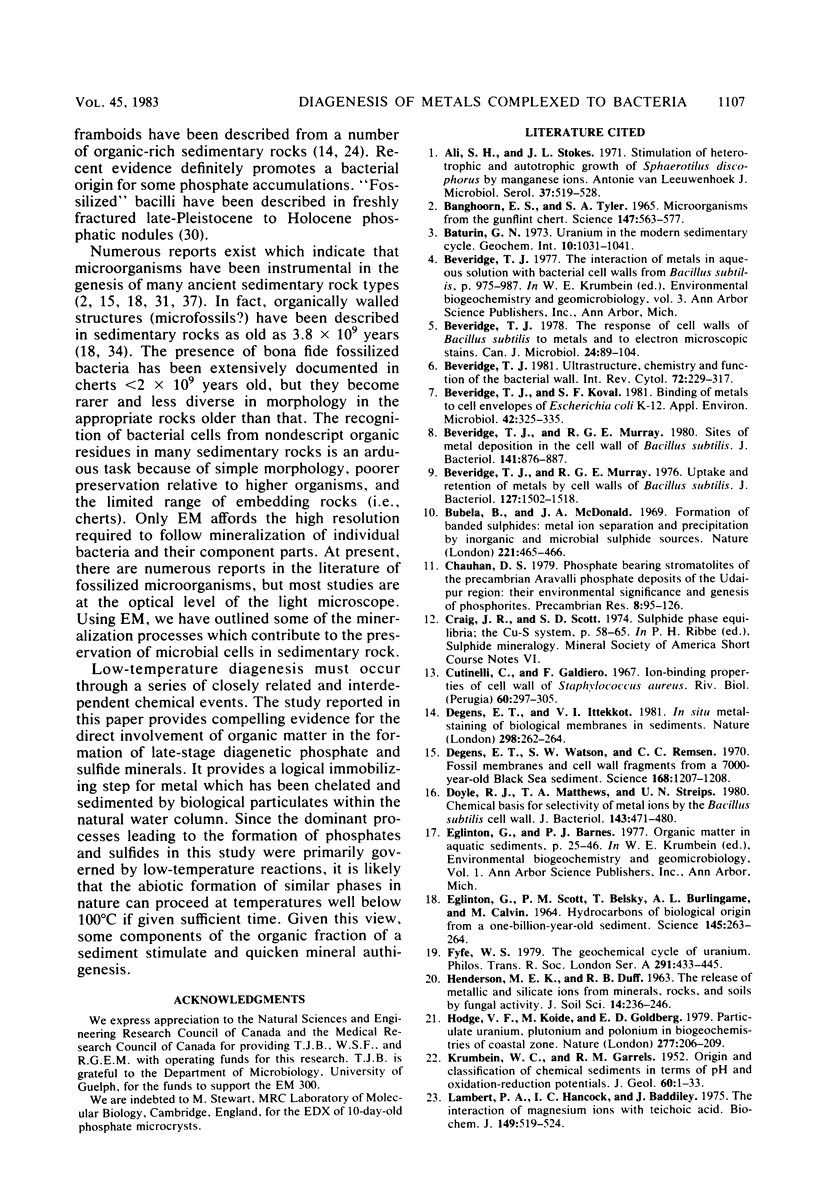
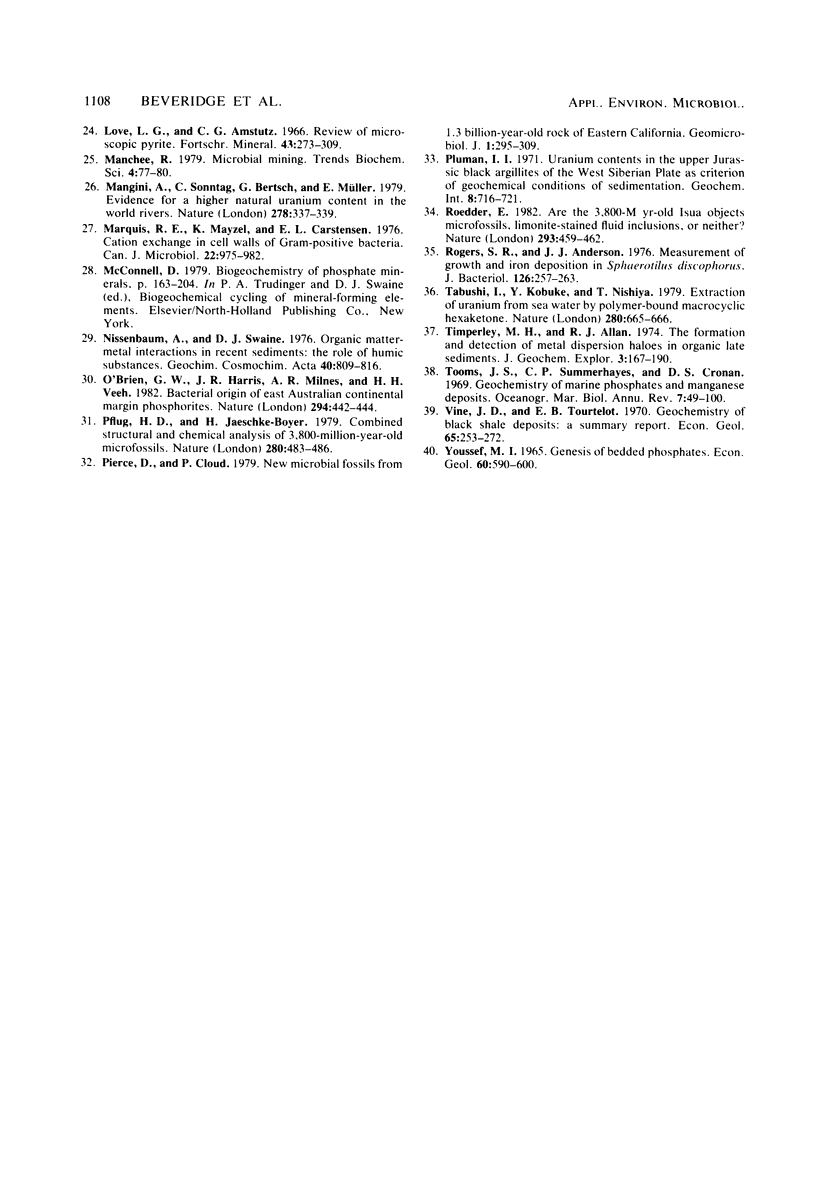
Images in this article
Selected References
These references are in PubMed. This may not be the complete list of references from this article.
- Ali S. H., Stokes J. L. Stimulation of heterotrophic and autotrophic growth of Sphaerotilus discophorus by manganous ions. Antonie Van Leeuwenhoek. 1971;37(4):519–528. doi: 10.1007/BF02218522. [DOI] [PubMed] [Google Scholar]
- Barghoorn E. S., Tyler S. A. Microorganisms from the Gunflint Chert: These structurally preserved Precambrian fossils from Ontario are the most ancient organisms known. Science. 1965 Feb 5;147(3658):563–575. doi: 10.1126/science.147.3658.563. [DOI] [PubMed] [Google Scholar]
- Beveridge T. J., Koval S. F. Binding of metals to cell envelopes of Escherichia coli K-12. Appl Environ Microbiol. 1981 Aug;42(2):325–335. doi: 10.1128/aem.42.2.325-335.1981. [DOI] [PMC free article] [PubMed] [Google Scholar]
- Beveridge T. J., Murray R. G. Sites of metal deposition in the cell wall of Bacillus subtilis. J Bacteriol. 1980 Feb;141(2):876–887. doi: 10.1128/jb.141.2.876-887.1980. [DOI] [PMC free article] [PubMed] [Google Scholar]
- Beveridge T. J., Murray R. G. Uptake and retention of metals by cell walls of Bacillus subtilis. J Bacteriol. 1976 Sep;127(3):1502–1518. doi: 10.1128/jb.127.3.1502-1518.1976. [DOI] [PMC free article] [PubMed] [Google Scholar]
- Beveridge T. J. The response of cell walls of Bacillus subtilis to metals and to electron-microscopic stains. Can J Microbiol. 1978 Feb;24(2):89–104. doi: 10.1139/m78-018. [DOI] [PubMed] [Google Scholar]
- Beveridge T. J. Ultrastructure, chemistry, and function of the bacterial wall. Int Rev Cytol. 1981;72:229–317. doi: 10.1016/s0074-7696(08)61198-5. [DOI] [PubMed] [Google Scholar]
- Cutinelli C., Galdiero F. Capacità legante ioni del cell-wall di Staphylococcus aureus. Riv Biol. 1967 Apr-Jun;60(2):285–305. [PubMed] [Google Scholar]
- Degens E. T., Watson S. W., Remsen C. C. Fossil membranes and cell wall fragments from a 7000-year-old Black Sea sediment. Science. 1970 Jun 5;168(3936):1207–1208. doi: 10.1126/science.168.3936.1207. [DOI] [PubMed] [Google Scholar]
- Doyle R. J., Matthews T. H., Streips U. N. Chemical basis for selectivity of metal ions by the Bacillus subtilis cell wall. J Bacteriol. 1980 Jul;143(1):471–480. doi: 10.1128/jb.143.1.471-480.1980. [DOI] [PMC free article] [PubMed] [Google Scholar]
- Eglinton G., Scott P. M., Belsky T., Burlingame A. L., Calvin M. Hydrocarbons of Biological Origin from a One-Billion-Year-Old Sediment. Science. 1964 Jul 17;145(3629):263–264. doi: 10.1126/science.145.3629.263. [DOI] [PubMed] [Google Scholar]
- Lambert P. A., Hancock I. C., Baddiley J. The interaction of magnesium ions with teichoic acid. Biochem J. 1975 Sep;149(3):519–524. doi: 10.1042/bj1490519. [DOI] [PMC free article] [PubMed] [Google Scholar]
- Marquis R. E., Mayzel K., Carstensen E. L. Cation exchange in cell walls of gram-positive bacteria. Can J Microbiol. 1976 Jul;22(7):975–982. doi: 10.1139/m76-142. [DOI] [PubMed] [Google Scholar]
- Rogers S. R., Anderson J. J. Measurement of growth and iron deposition in Sphaerotilus discophorus. J Bacteriol. 1976 Apr;126(1):257–263. doi: 10.1128/jb.126.1.257-263.1976. [DOI] [PMC free article] [PubMed] [Google Scholar]





